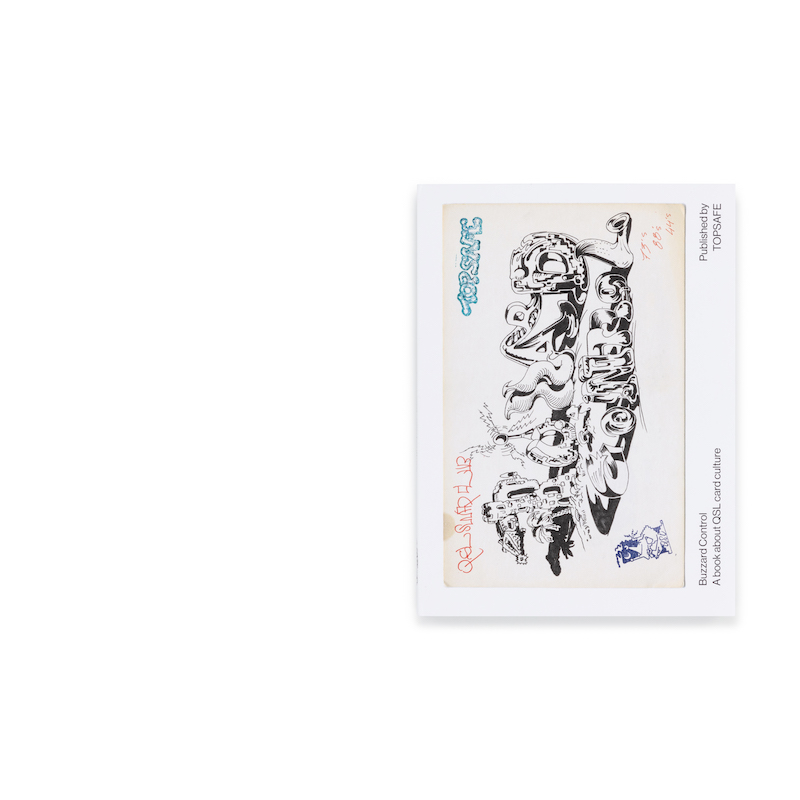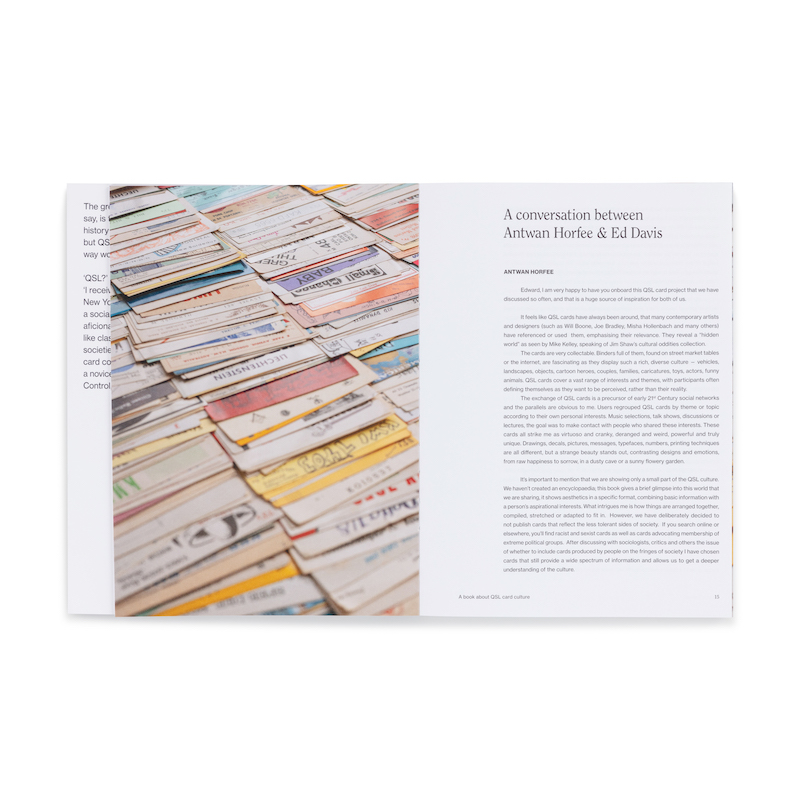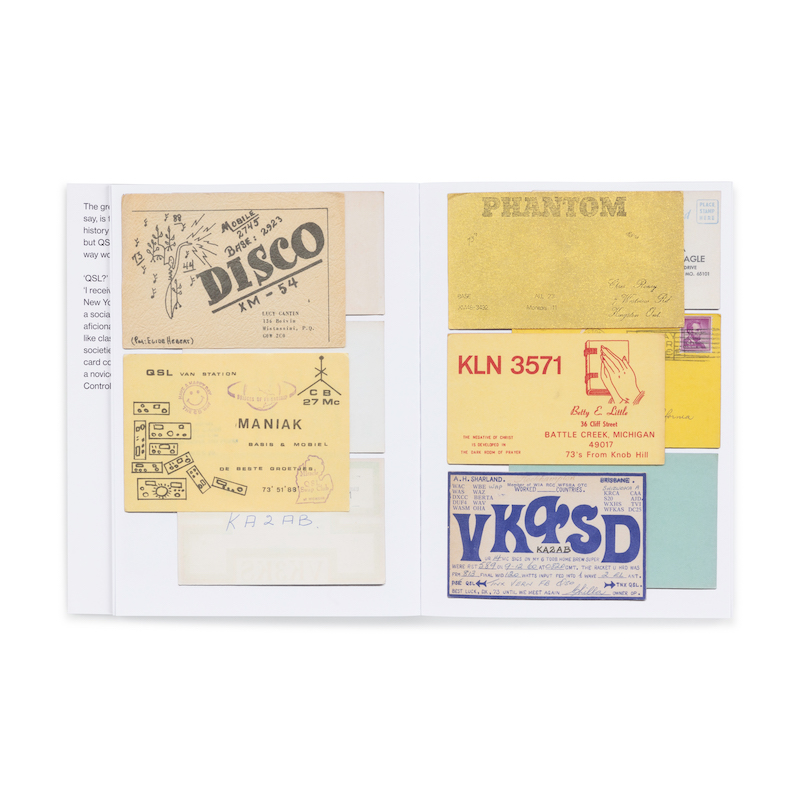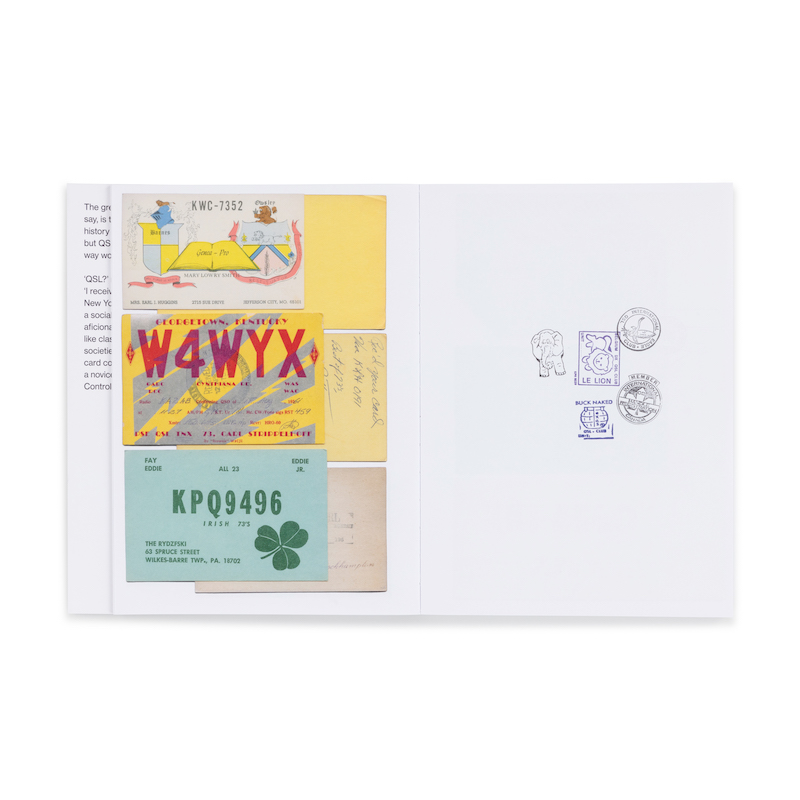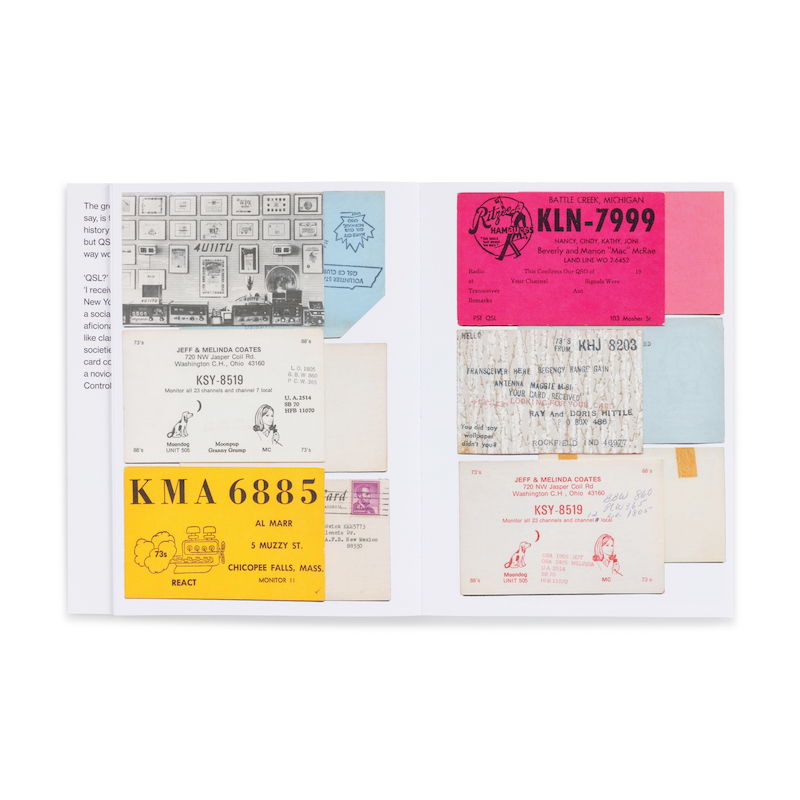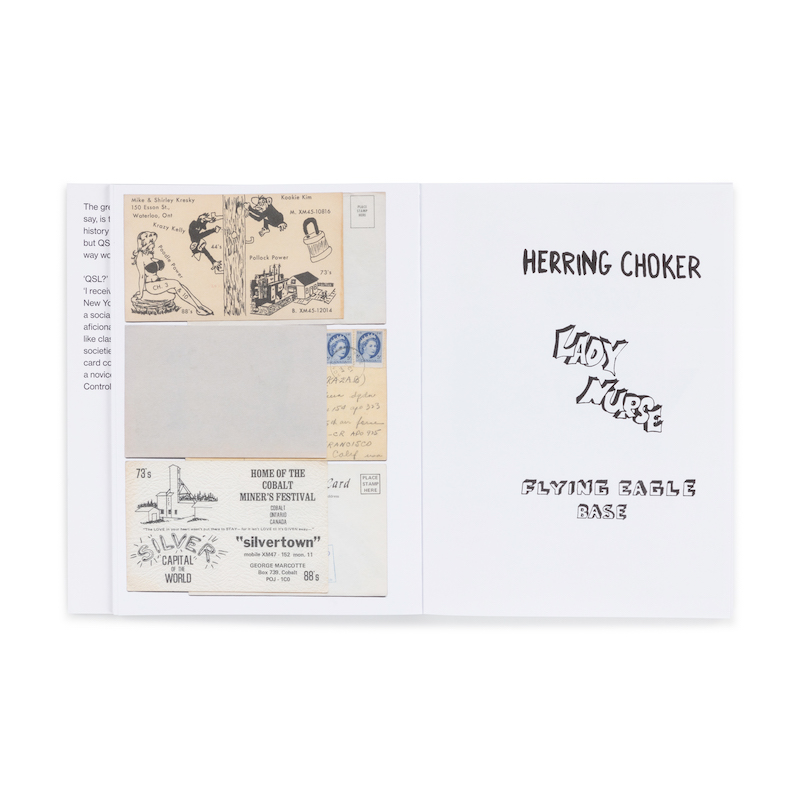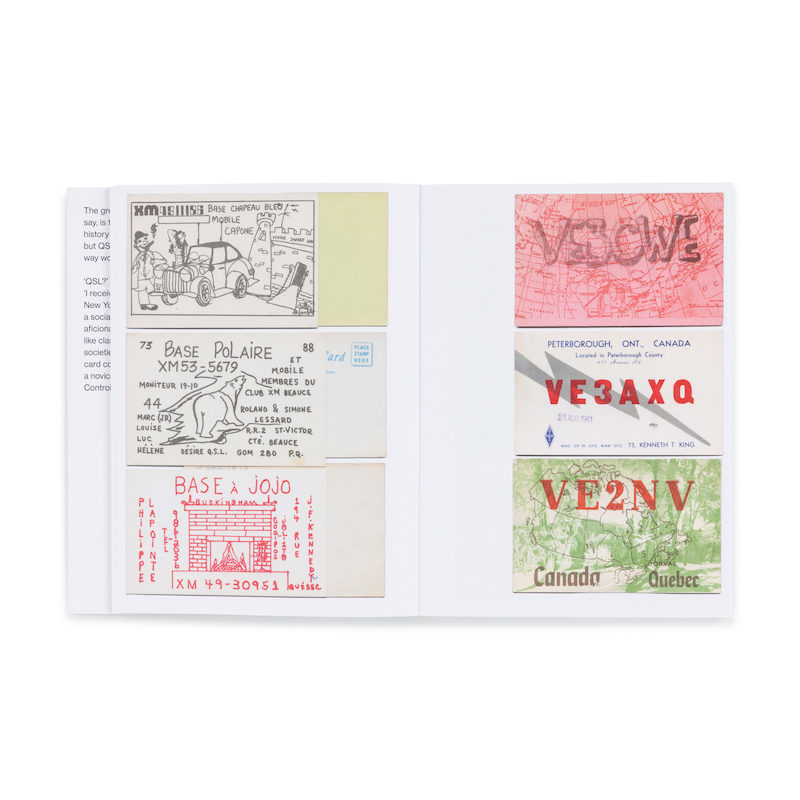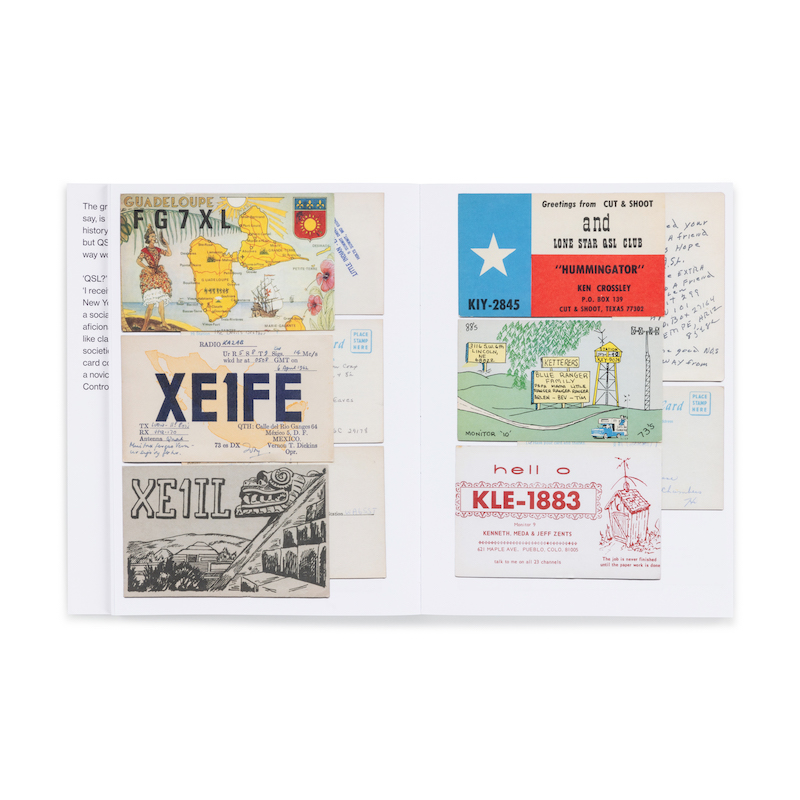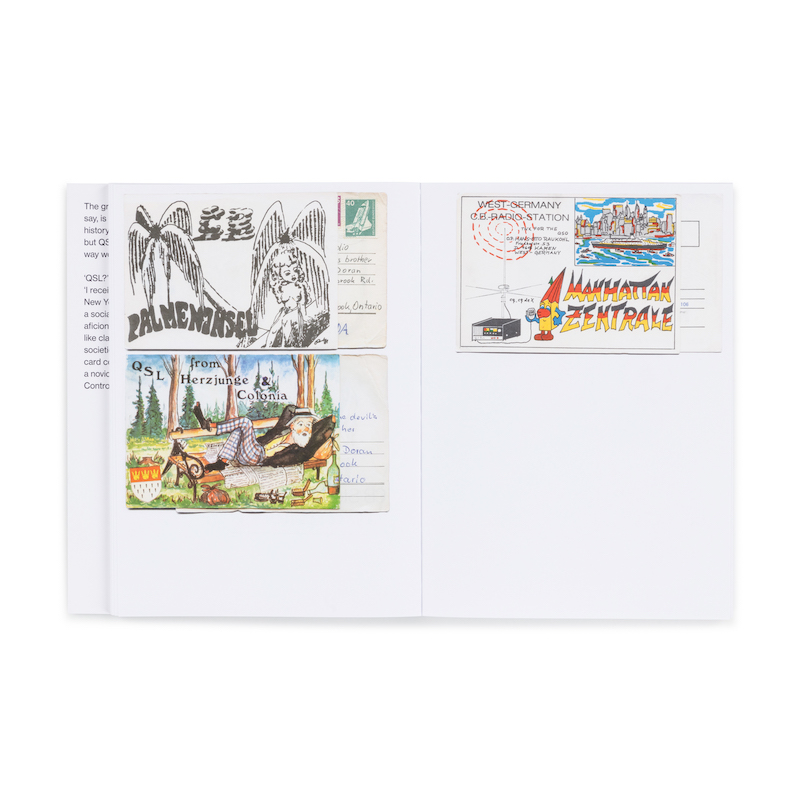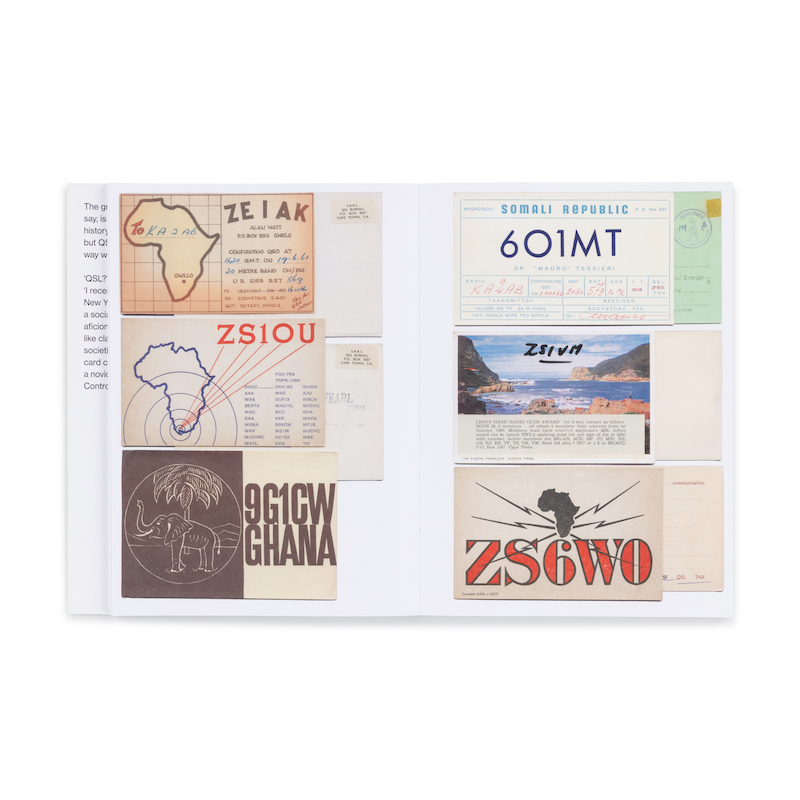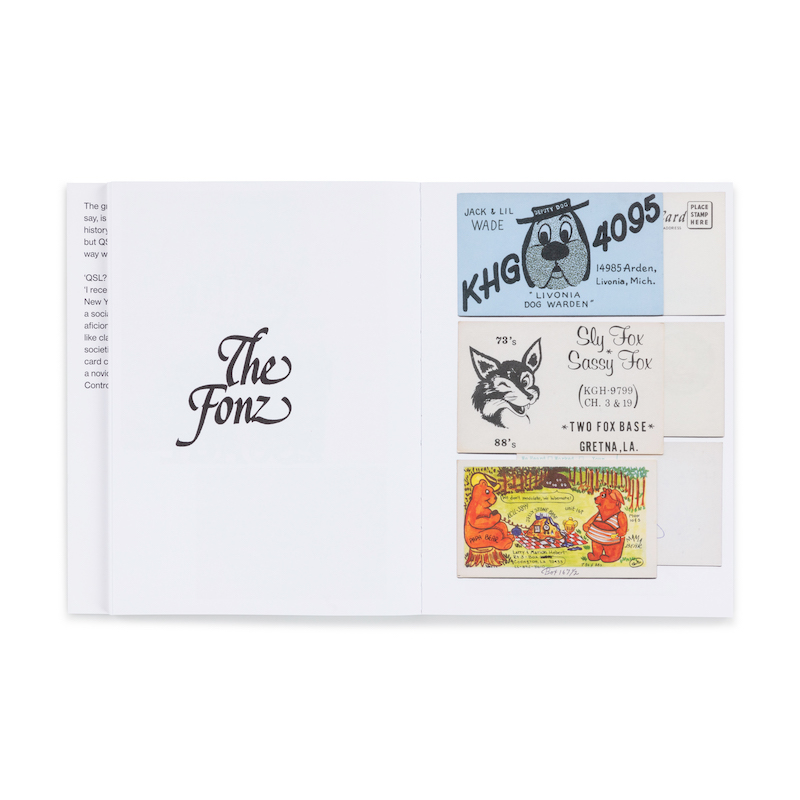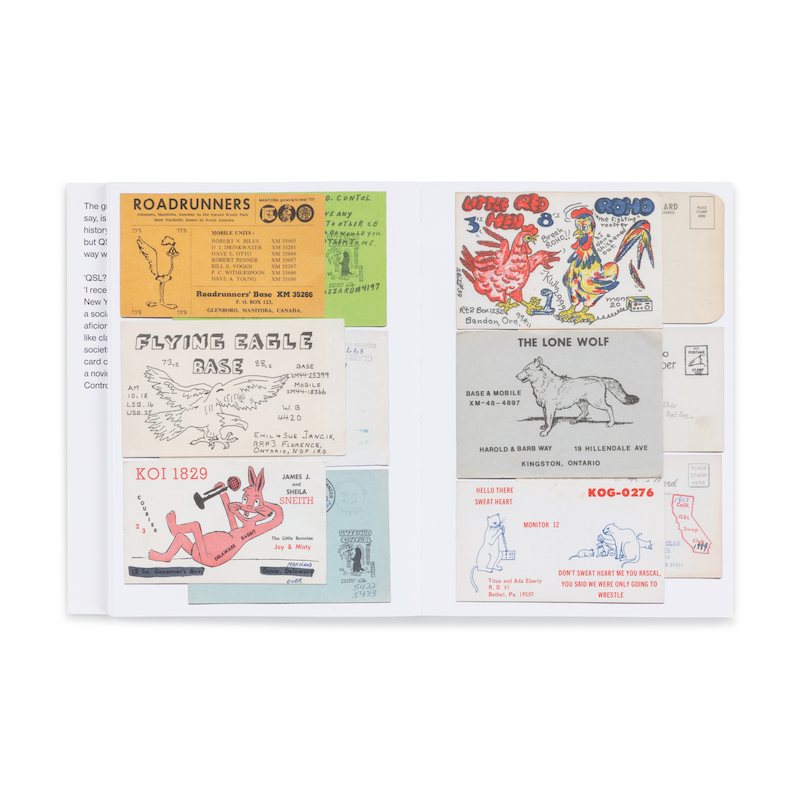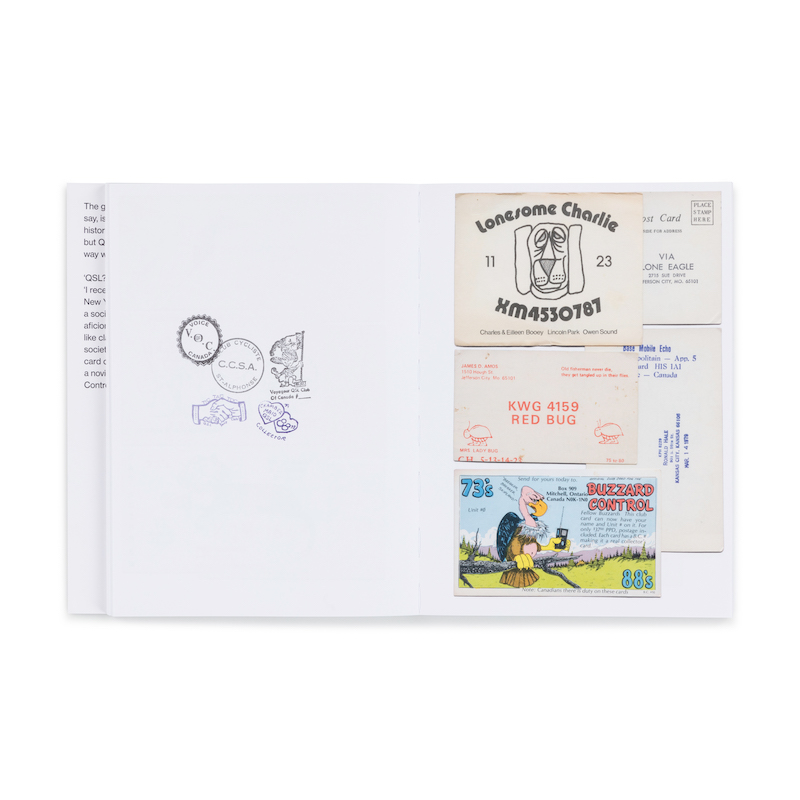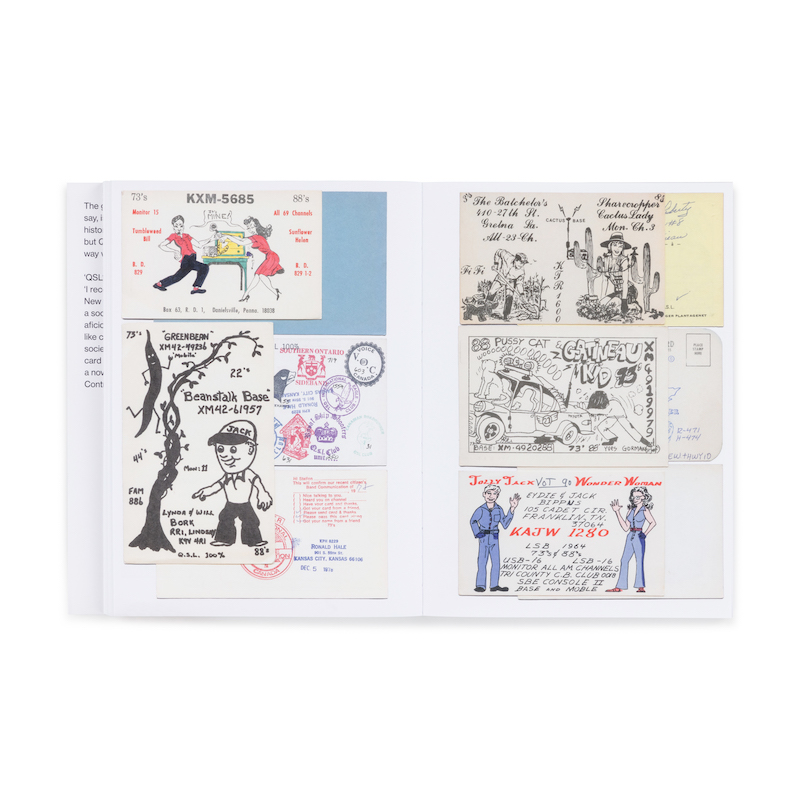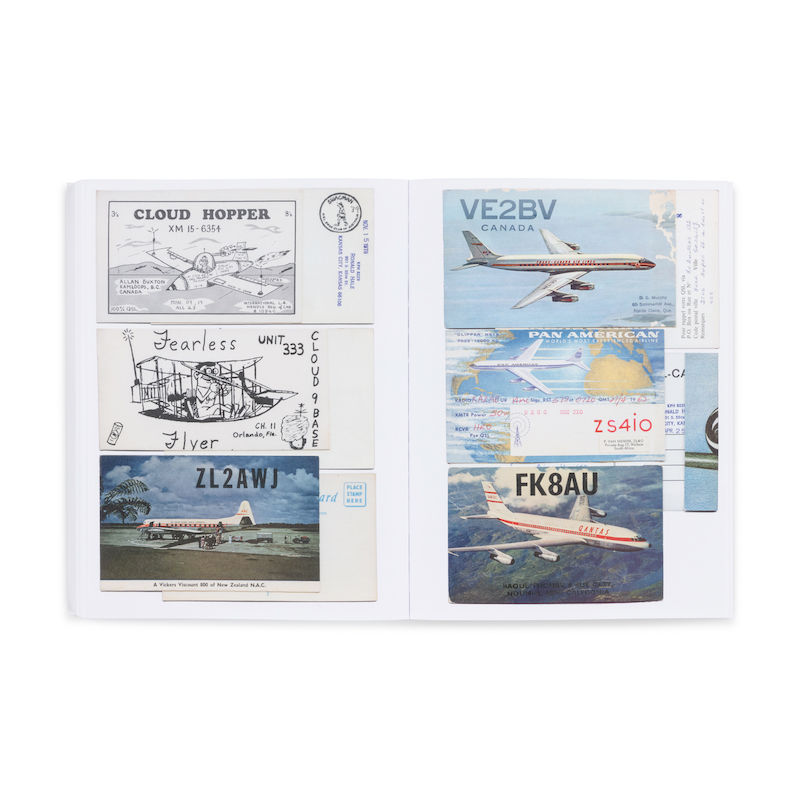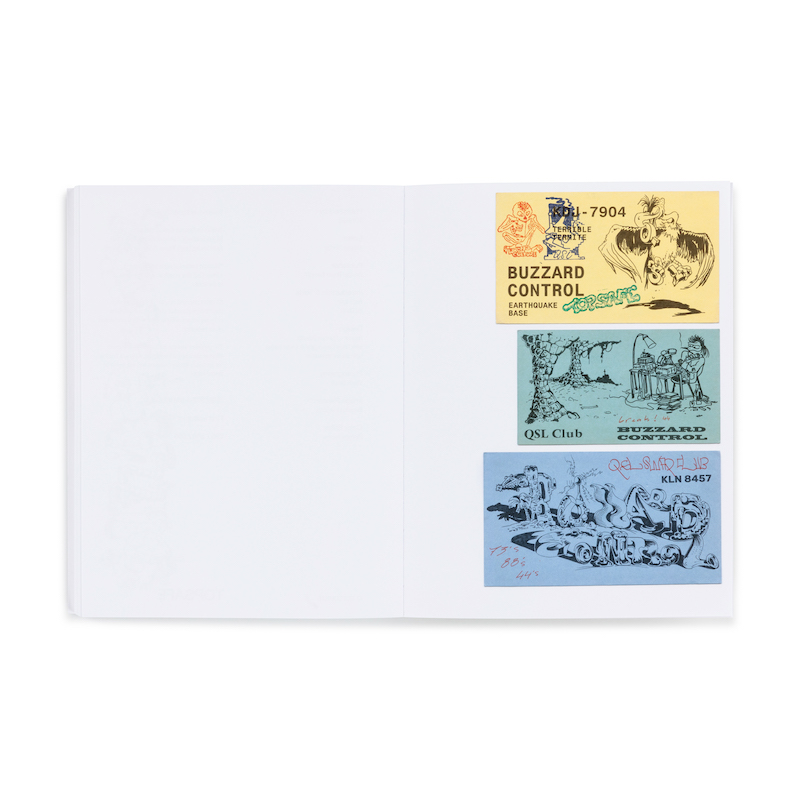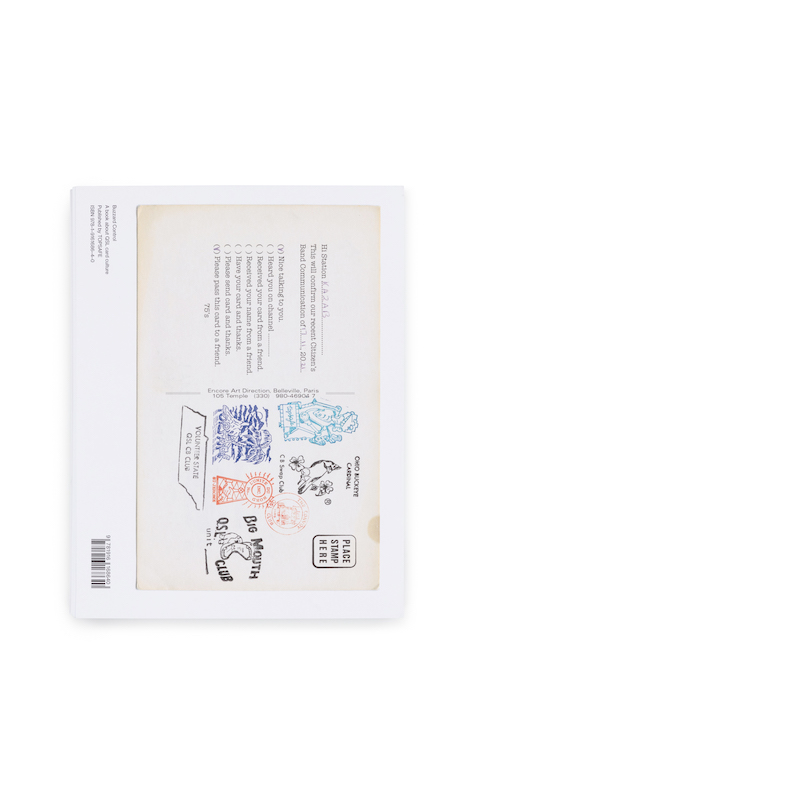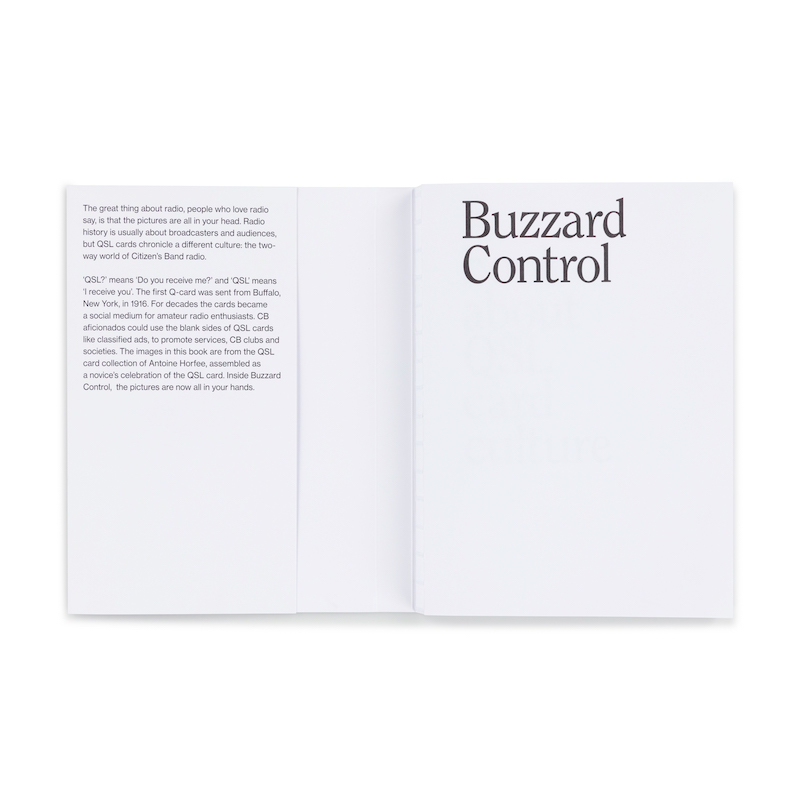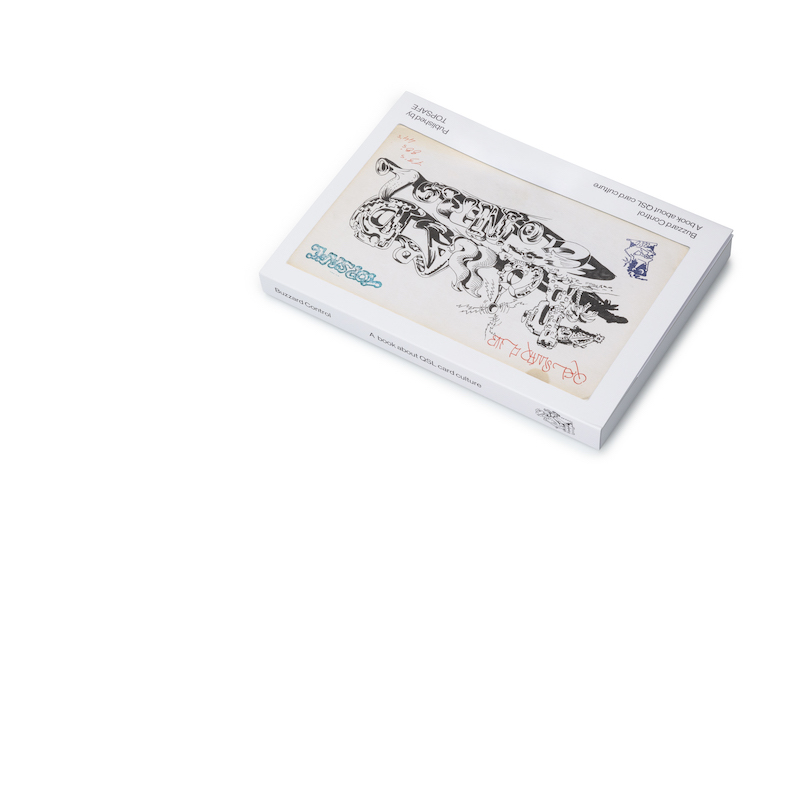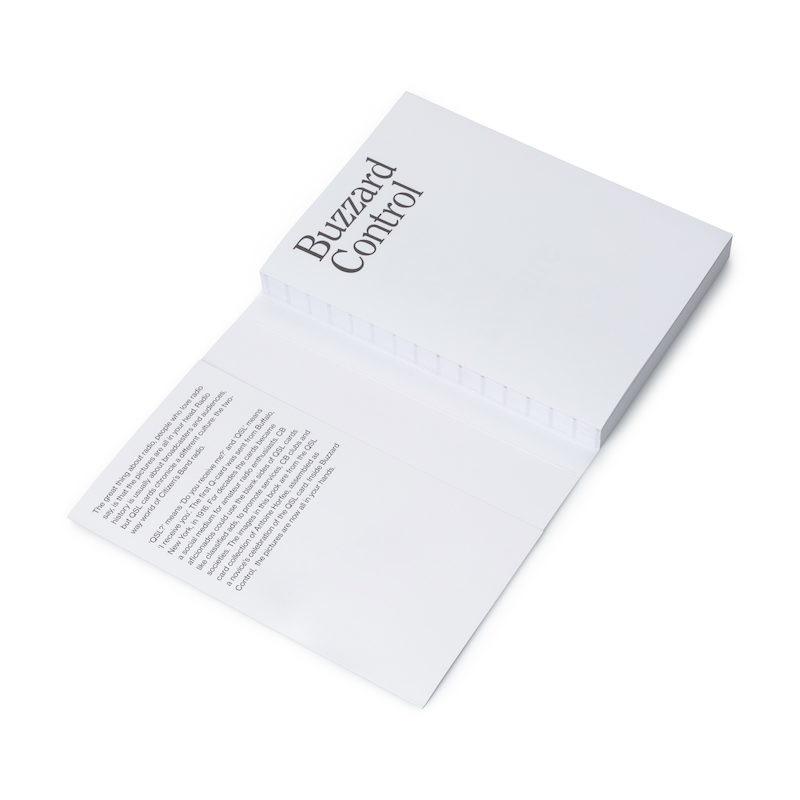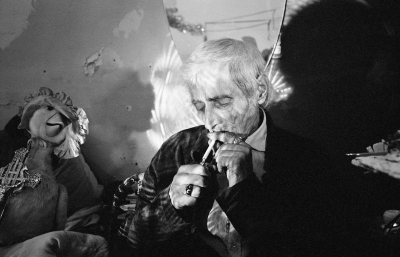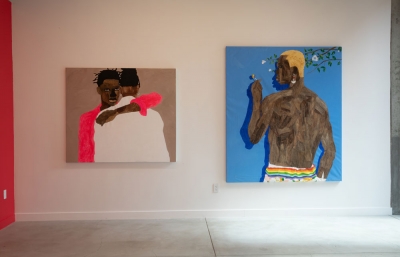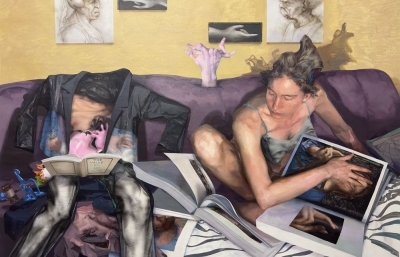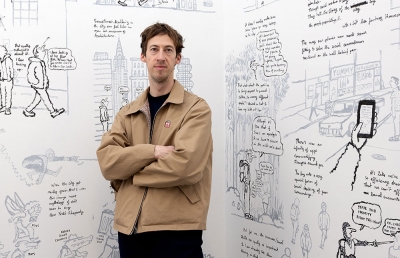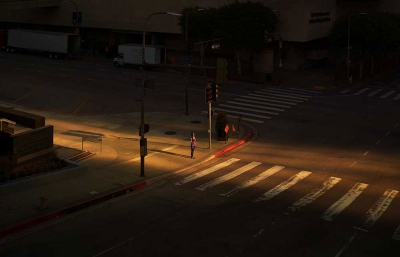Antawn Horfee is a collector of visuals. As a graffiti artist, he is one of the most influential and genre-bending, turning the streets of Paris into a collision of cartoons and psychedelics. As a fine artist, he is making waves with his otherworldy balance of figuration and abstraction. As a book maker, he continues to show a passion, and his newest book with Topsafe, Buzzard Control, and his collection and obsession of QSL cards. As the publisher notes, "QSL?’ means ‘Do you receive me?’ and ‘QSL’ means ‘I receive you’. The first Q-card was sent from Buffalo, New York, in 1916. For decades the cards became a social medium for amateur radio enthusiasts. CB aficionados could use the blank sides of QSL cards like classified ads, to promote services, CB clubs and societies. The images in this book are from the QSL card collection of Antoine Horfee, assembled as a novice’s celebration of the QSL card." We spoke to Horfee about these cards, the book, his inspirations and the collector mentality.
Evan Pricco: First things first, I'm trying to decipher your connection to the QSL card, and I admit I had to look it up.
Antwan Horfee: I am interested in things once they are fabricated! It unfortunately offers a very large amount of interests. I spent lots of time looking, just non-stop at scans, objects. Most of the time it becomes torture, but mix it with the spice of a discovery, it becomes a souvenir. It's about half texture, half imagery, immediately I needed to look at more. I think you need to see at least 10,000 of them to succeed to see what could be representative of this. It’s the early age of avatar! It's 100% graffiti somehow, try to look honestly at stylish hybrids components.
Are there places were you can research and find the old designs? Are their collectors of these sorts of things? And where do you collect them?
Well, the Internet is where I discovered them, Tumblr to be exact. Then I realized I could see some parts of these cards extracted here and there on clothing, or in zines. We were having this discussion the other day with my friend Leomi Sadler about how perfect they all look, and how she and I both discovered it on these old Flicks pages. I never stopped thinking about them since .
Also, I’ve seen them on tables and binders discretely on tables or in flea markets in America or NYC vintage stores had some displayed. But once they’re in stores, I have to say they kind of lose their juice. I really wish I had a contact straight into one of these couples from the 1950s.
I have a hunger for books made by collectors for collectors. I try to have time in my life to also build them my elf if I can. Having an artist approach on a material making a book with that is different than having a PhD about it. It enlarges the prism of understanding for people that try to discover something.
So what was the first steps in designing your own QSL? Was it just a good shape and size to start?
Well I guess the adventure of drawing is like a giant QSL card, designing a printed project really. Designing your stamp, as a handmade label. I am just an enthusiast in the vast world of folkloric vanishing cultures, I guess facing the fact they all got stocked by ancient practicers. I am on their trails!
I have designed so much stuff for friends— their logos, a character, a custom tattoo, or a menu for their restaurant. So without having a personal radio show, I feel very close to the art of crafting these cards. In a period where it’s all digital i still do lots of hand collage, and hand drawings, and Letraset transfers. I feel like I could do some cards everyday for anyone that would like to be part of this community. Designing cards is not really a thing of my generation, I guess in France we had “telephonic cards “ in the 1980s, so it was made of plastic, It was impossible to design them as they were processed by industries. Same for imported Japanese animation cards sets. We couldn’t reach that level of precisions or colors printed. However, customizing things has always been a pleasure, like buying a blank jacket or sweater and draw on it, add pockets, cut the sleeves.This is powerful!
That excitement to be in charge of something, to make things dramatically more expressive; if it’s useful or not, it is not the point. Crossing that line feels singular, drawing with a marker on a denim jacket makes your jacket unique, and makes it also visible that you don’t belonging to the mass of all the denim jacket owners. 
Your work has evolved so much over the last few decades. You were an innovator in graffiti, as your style was this super interesting mixture of characters and abstraction and really... play? And your canvases are doing the same, this sort of hybrid of comics and cartoons and abstraction and just unique work. Working in this format must be like a halfway point for you? Between graffiti and gallery work?
I consider traces in the streets from activities of communities very important. It’s a proof that the population of a city is alive between the lines, practicing it’s own language, and developing some sort of force that can speak to a very large audience. Whatever forms it can take, iPhone trends, dances, or group of photographs or taggers of course.
Trying your best to sculpt a hyperactive anonymous character out of the walls of the city\, and open a dialogue in a space with the contemporary art world as a structure to receive it, it’s a very different project. Being innovative is a must for me if the goal is being visible within a very codified graphical culture such as graffiti, but as much as I like this challenge, I also enjoyed to play the codes of this aesthetically isolated island.
I think like this: How to quote that we are all filters and receptacles to communicate dreams and phantasms of us all? How to transmit the passion in the plastic research that gives birth to physical accessible forms? How to not be snobbish and still open a discussion with anyone that could be touch by any sort of details in the work produced. How to not speak a language that is supposedly called “art” because suddenly it’s cultivated, cultured, evolved and lettered that will obviously then speak only to an elite stratum. Instead, créative language can be evolved, sophisticated and singular, but can still gives access to enthusiasts, still group people from any sort of social groups around ancestral community topics.
That might be different points between these two paths of my life. Also one of them was only my youth hobby and the other is my work, even though both are a way to exist in society but indeed differently. I wanted to achieve something that needed all my time, I wanted to dive into it 100% and had to quit everything else. I had to put the entire energy on one thing, just like an obsessive center of interest, to make it at a speed that corresponds to me.
So in a way what I want when I participate in a book like this Buzzard Control, is going to the essential, quickly reach the essence of what striked me when I collected them. 
I was thinking about this as I flipped through the book, but who are some of your design heroes?
Well it’s easy to observe the ones I like are the drawers who made the bridge between comics and product. Rick Griffin, Robert Williams, Ed “Daddy” Roth or Jim Phillips were my most important crushes at a young age, discovering all sort of posters and record covers. When I look at t-shirt design, set designs for concerts, movies or theater plays, Tadanori Yokoo, Roger Dean or even Hajime Sorayama. They created the context where more contemporary designers are evolving, the pioneers that laid the first stones. I have deep respect for those who dare, for those who assumed their differences, and for those who supported their communities that surrounded them. When typeface reached a high level between efficiency and style when these crafts mixed to create a third global identity that support cultures and in a way becomes also it’s flesh? I love it.
What is your favorite era to look upon for inspiration? Or do you not to such a thing?
I think it’s all interesting really, what comes out now is very inspirational in terms of how it reflects our fast consuming period. Large numbers of great artists and architects or designers are pushing borders and developing amazing worlds of their own. The past obviously makes a rich present, and I love finding sources of personal enlightment when I discover a new author, hidden or famous in a different country. Old or new are just humans after all, and it’s easy for me to dive when I see a signal!
Besides Buzzed Control coming out, what is next?
In therms of printed materials I will prepare a multicolor lithograph edition witch I haven't done in a long time as I was only obsessed with black and white! I will do a second screenprinted book. Books, to me, are fully a customized subject for fun and discovery, and I never tire of all kinds of printed techniques. I hope these details are helping you to understand why I enjoyed QSL, and why I think the 2020s need to learn from it!
You can purchse Buzzed Control via Topsafe now.

